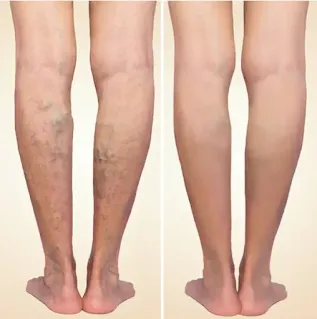What is varicose vein removal? 4 of the best treatments to consider
Because of varicose veins, you may never wear shorts again. Perhaps you even conceal or conceal those grey-blue veins with concealer or foundation. You probably believe you're attracting more attention than if you were dressed in head-to-toe neon on a sunny day.
Does this sound familiar?
Varicose veins, on the other hand, are extremely inconvenient. They can wreak havoc on your self-esteem and limit what you wear and how comfortable you are in your own skin.
That is why varicose vein removal procedures are available. Despite the fact that they've been around for a long time, they've become refined over time.
You can now have those pesky varicose veins treated in an hour during your lunch break at work. Then you can carry on with your day as if nothing had happened. That's how minimally invasive the varicose vein treatments is.
Are you considering having your varicose veins removed? Continue reading to learn about the procedures that are available to you.
What Are Varicose Veins?
Before we get into the treatment options for eliminating varicose veins, let's define varicose veins.
Varicose veins are veins that have enlarged or become twisted over time. Varicose veins can occur in any vein, but they are most commonly found in the legs and feet due to the pressure placed on them while standing and walking.
Varicose veins are usually just a cosmetic issue. They may be unsightly, but they are usually not inherently dangerous.
However, varicose veins can increase the risk of life-threatening conditions such as deep vein thrombosis and pulmonary embolisms in some cases. They can occasionally cause pain and discomfort. They can sometimes cause more serious problems and even be a sign of more serious circulatory problems.
So, are you wondering how to treat varicose veins? Read on to find out
1. Sclerotherapy:
Sclerotherapy may be a good option if you have small to medium varicose veins, also known as "spider veins."
A solution is injected into the veins using this method. This causes them to collapse, only to be reabsorbed by the body and vanish. Sclerotherapy will not make the veins disappear immediately. Instead, it will most likely take a few months to see the full effects.
Depending on the severity of your varicose veins, you may require more than one treatment to be effective. The good news is that this method is relatively simple and does not necessitate any downtime. As a result, there is no need to take time off from work.
Walking and moving your legs around immediately after the procedure is vital in preventing blood clots from forming. You'll probably need to wear compression socks for a few weeks to keep pressure on the veins that were treated.
2. Phlebectomy or Vein Stripping
If you want a permanent solution for your varicose veins, phlebectomy or vein stripping may be a good option. Phlebectomy, also known as vein stripping, is recommended for veins that are located very close to the skin's surface. It's also useful for bulging and bumpy veins on the skin's surface.
A local anaesthetic will be administered to the affected area for this procedure. After numbing the affected area, the surgeon will make small incisions near the vein and remove it. As a result, this is a long-term solution to your varicose vein issues.
After the vein has been removed, compression stockings or bandages will be worn. There are no stitches required, and you are unlikely to notice any scars as a result of the procedure.
You'll be able to get up and walk around right away, just like with sclerotherapy.
You may want to combine phlebectomy or vein stripping with other varicose vein removal procedures for the best results.
3. Endovenous Laser Treatment
Laser treatment appears to be available for a wide range of medical and cosmetic procedures these days. Treatment for varicose veins is no exception.
Indeed, endovenous laser treatment is regarded as an excellent option for the treatment of varicose veins. There are no incisions or injections required, so it is non-invasive. It can also be done quickly, so it won't take half a day to complete.
Endovenous laser treatment, also known as thermal ablation, employs the use of laser or radiofrequency energy. This causes the inside of the vein to heat up, destroying the vein wall and eventually shrinking the vein. They are absorbed by the body over time.
Because of the high amount of heat applied, the affected area will need to be numbed with local anaesthesia. The only drawback to laser treatment is the possibility of bruising at the treatment site for about a week afterward.
After a week or two, you'll notice that the appearance of the veins has significantly diminished.
4. Nonthermal Ablation:
Non-thermal ablation causes varicose veins to shrink and be reabsorbed by the body. However, there is one significant difference: instead of using heat, non-thermal ablation uses a drug or glue.
The narcotic is applied to the vein to permanently destroy it in the drug-related treatment method. Glue, on the other hand, can be used to seal off the vein.
These procedures appear to be very effective for treating varicose veins. However, because they are new, there aren't many studies to back up their efficacy or potential complications.
Take Advantage of Varicose Vein Removal Treatment Right Now!
In conclusion, many people suffer from varicose veins. If varicose veins have been bothering you, varicose vein removal treatment may be the way to go. Depending on your specific situation, one treatment method may be better than the others.
So, be sure to reach out to your skincare professional to find out which treatment is best for you and rediscover your best self!
Image Source: Google

